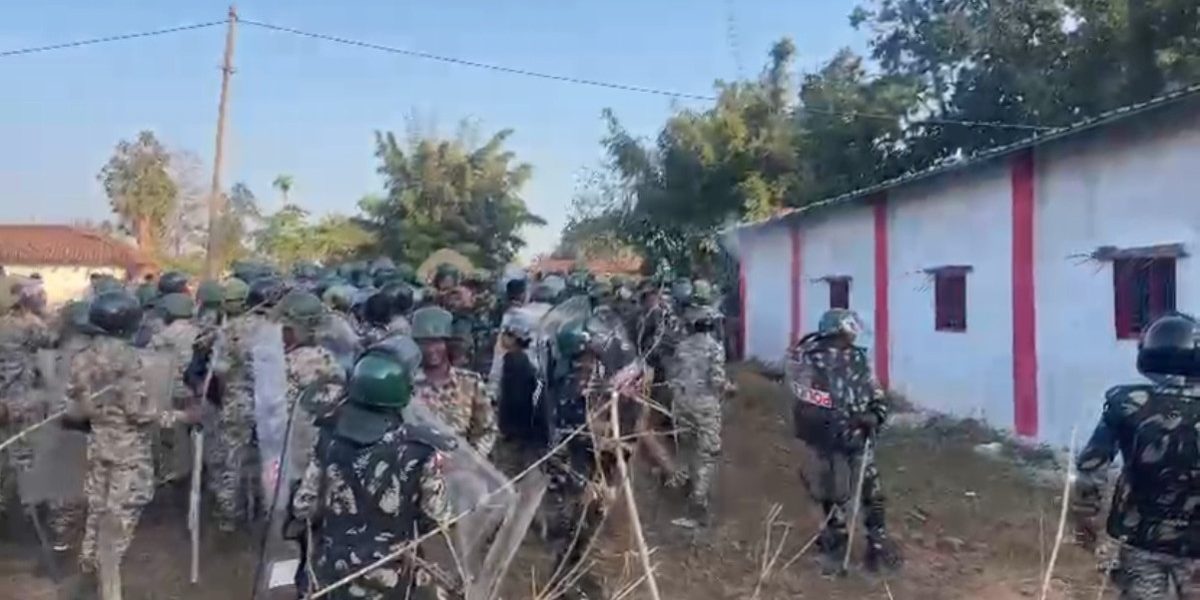
A few months ago, one of the largest conflicts between Hindu and Muslim communities occurred in Leicester, home to one of the largest South Asian diasporas. Only last year, Leicester was celebrated as the most multicultural city in the UK, so the widespread unrest shocked the nation. However, according to local Muslims, tensions between the Hindu and Muslim communities in Leicester have been simmering for some time. In 2018, for instance, an application by a Muslim run organisation to turn a former warehouse into a community centre and nursery on Belper Street was rejected. Comments from the local community at the time included concerns about having an Islamic place of worship in a part of the city where most residents are Hindu, and it was thus portrayed as a ‘mosque application’ in order to garner support to oppose it. Worryingly, further comments left on the council’s website appear to be Hindutva-inspired, parroting Islamophobic tropes. Another example of the rise of Hindutva was the 2019 General Election when Hindu Conservative supporters carried out an ‘operation Dharmic vote’ in Leicester. This operation was a campaign against the Labour party that used racist and Islamophobic slogans such as ‘will the Dharmic [referring to Hindu] community end up with Amrut [nectar i.e. Conservative candidate] or Poison [Labour candidate]?’. More recently, there has been an ongoing campaign of anti-social behaviour aimed at the Muslim community of East Leicester, including targeting local mosques and reaching the tipping point when Hindutva-inspired individuals paraded through the streets of Leicester wearing balaclavas.
Meanwhile, the spread of misinformation played a significant role in fuelling the Hindu-Muslim discord in Leicester. As a result, it is concerning that some media outlets and individuals exploited the tension to foment hatred and division between the Muslim and Hindu populations by promoting misinformation when peace and order were paramount.
A widely shared tweet, for example, accused ‘Islamist extremists’ of setting fire to a Birmingham supermarket. The Fire Service eventually determined that the fire was caused by outdoor litter burning. Nevertheless, many people used the incident to disparage Muslims amid the commotion. Whereas, when Majid Freeman covered the events in Leicester via his Twitter account, he was condemned for reporting the abduction of a 15-year-old Muslim girl. However, after he himself investigated this story further, he found it to be untrue, removed the post, clarified the facts and publicly warned others about the harms and consequences of making up such incidents. Although both Hindus and Muslims spread false reports, studies found that the propagation of misinformation was part of a larger and likely coordinated strategy by BJP followers.
According to a BBC investigation, more than half of the 200,000 tweets sampled came from accounts geo-located to India, with hashtags #Leicester, #HindusUnderAttack and #HindusUnderattackinUK. The BBC further noted that the ‘most prolific [Indian] user of some of these hashtags had no profile picture and the account was only started earlier this month’. Logically, a tech company that fights misinformation, also examined these hashtags, corroborating the BBC’s findings, and highlighted that highly followed media figures in India fed into the anti-Muslim narrative by spreading lies on social media, such as the claim that ‘Muslims had attempted to keep Hindus, including children, hostage at a temple’. Their tweets received the highest reach and retweets, while Facebook posts with similar claims went viral. These findings are hardly surprising given the ubiquity of fake news in India. The National Crime Records Bureau (NCRB) data bureau showed ‘that incidents of fake news in India and rumour circulation’ increased almost three folds in just a year (486 cases in 2019 to 1527 cases in 2020). According to a later study, this has become increasingly relevant as BJP supporters who openly adhere to Hindutva principles have grown in number. Approximately 18,000 Twitter accounts spread fake news on behalf of the Indian far-right party, focusing on spreading anti-Muslim narratives. It is likely that Twitter bots were created during the tensions in Leicester to strengthen the narrative of Hindu victimisation or Hinduphobia in the UK under the guise of advancing the RSS-rooted Hindutva ideologies.
This story was originally published in mend.org.uk . Read the full story here





